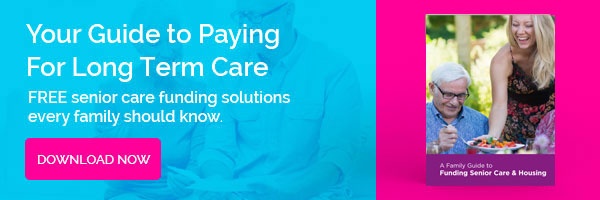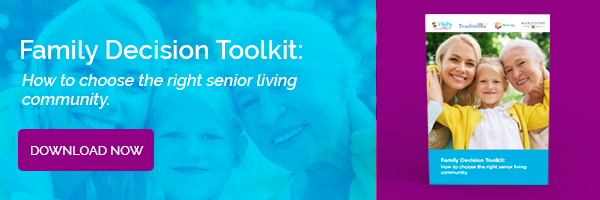When it comes to Veterans Aid and Attendance, it can be hard to separate myth from reality. The benefit is intended to help wartime veterans or their surviving spouse pay for care in independent living, assisted living, home health care, adult day care or skilled nursing. The VA provides a pension benefit toward rent for those who meet qualifications. The application process can be complex and confusing and often misinterpreted. Unfortunately, this causes far too many seniors to either miss out on the full benefit to which they are entitled. The process is so daunting many do not attempt the process. We can help by clearing up some of the most common myths.
For more information on preparing financially for retirement, check out our Family Guide to Funding Senior Care & Housing!

Myth: To qualify for Aid and Attendance you must have served in a combat zone.
Reality: To qualify, the veteran must have served during an eligible wartime period. Except for the Vietnam wartime period of February 28, 1961 to August 4, 1964 there is no requirement that the veteran must have served in a combat zone. The service criteria are 90 days of active duty, with at least 1 day during an eligible wartime period and the veteran was other than dishonorably discharged. Or, your spouse at the time of their death met these criteria.
Myth: Veterans Aid and Attendance is only for service-related disabilities.
Reality: While there are benefits for service-related disabilities, Aid and Attendance is not one of them. Rather, the applicant must be eligible for the basis pension and must meet at least one of these medical requirements.
Myth: The surviving spouse must have been married to the veteran when he or she was enlisted to qualify for Aid and Attendance.
Reality: A surviving spouse is considered eligible for the Aid and Attendance benefit if he or she was married to the veteran at the time of their passing and has not remarried. The spouse must have been married to the veteran for one year prior to their death unless there was a baby, and have been living with the veteran the year before their death, unless living separately for medical reasons.
Myth: A spouse can only receive Aid and Attendance if the veteran has passed away.
Reality: If a veteran is still married and his or her spouse needs care, they are considered a dependent spouse. A married veteran can be awarded a Basic Pension if he or she has a dependent spouse as long as eligibility requirements are met.
Myth: You should not apply for Aid and Attendance until your assets are below $80,000.
Reality: In 2018, the VA adjusted the maximum amount of assets an applicant, whether single or married, is allowed to have. It’s now equal to the Community Spouse Resource Allowance defined by Medicaid ($129,094 for 2020). If you do have assets over the maximum amount, don’t rush to transfer them however. First, consider how long it will take for your assets to decline naturally and then determine if that time frame will be longer than the 3-year look-back period.
Myth: Your home always counts as an asset.
Reality: If you wish to rent your primary home, the VA no longer counts it as an asset. This allows you maximize the earning potential of the home to pay for care while still retaining ownership.
Myth: You can’t receive a partial benefit for Aid and Attendance.
Reality: It’s not all or nothing; you can get a partial benefit. For example, if your income minus home care and facility costs leave you with a positive number or “Income for VA Purposes,” but one less than the Maximum Pension Benefit, you can receive the approximate difference between the Maximum Pension and the calculated Income for VA Purposes.
Myth: Aid and Attendance will not help pay for independent living.
Reality: In 2018, the VA changed its rule on custodial care expenses (non-medical care that helps individuals with activities of daily living and basic care needs). Although a medical professional typically recommends it, the actual providers of custodial care are not necessarily medical professionals themselves. This paved the way for veterans or their surviving spouse to become eligible for Aid and Attendance from home care to independent living to assisted living to skilled care as long as they receive the basic VA pension and continue to meet medical criteria.
Myth: If you don’t qualify for Veterans Aid and Attendance now, you never will.
Reality: If the reason a veteran or surviving spouse is ineligible is because you didn’t meet the medical and/or the financial requirement, keep in mind that medical conditions, income and assets change over time. This means that although you may be ineligible now, that may not be the case later. Aid and Attendance is not a ‘yes’ or ‘no’ benefit, rather it’s an ‘if’ and ‘when’ benefit.
Myth: Aid and Attendance is not a lifetime benefit.
Reality: It is a lifetime benefit as long as the veteran or surviving spouse remains qualified. As such, you are obligated to inform the VA of any changes to income, assets or monthly unreimbursed medical expenses.
For more information, check out our Family Guide to Funding Senior Care & Housing!


